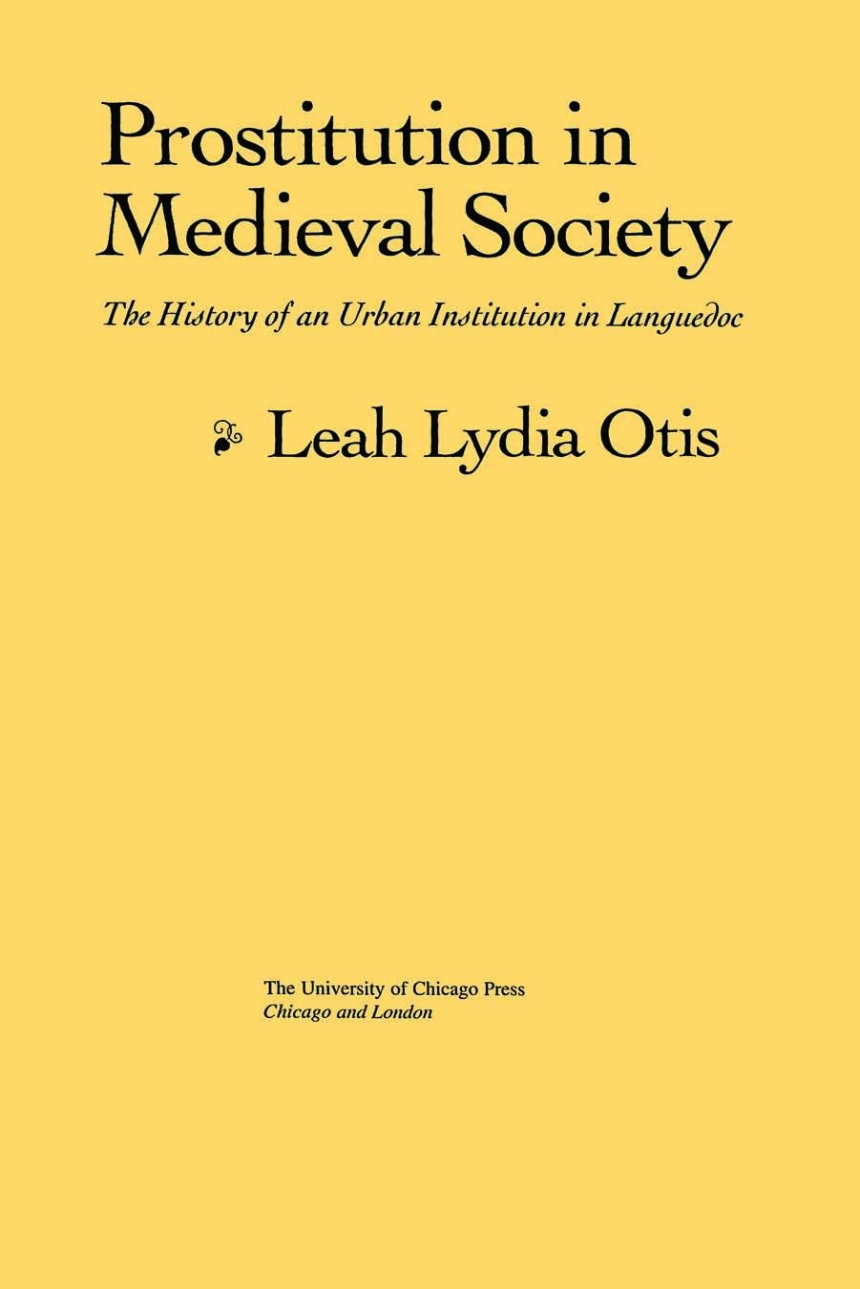Prostitution in Medieval Society
The History of an Urban Institution in Languedoc
258 pages | © 1985
Table of Contents
Foreword by Catharine R. Stimpson
Preface
Abbreviations
Approximate Money Equivalences
Introduction
Part One: Prostitution and Public Authority: An Evolution
Prologue to Part One: Toward a Chronology of Medieval Prostitution
1. The Twelfth and Thirteenth Centuries: Prostitution Accepted
2. The Fourteenth and Fifteenth Centuries: Prostitution Institutionalized
Epilogue to Part One: The Sixteenth Century: The Institution Dismantled
Part Two: Structures and Dynamics of Institutionalized Prostitution
Prologue to Part Two: The Language of Prostitution
3. Public Houses: Physical Plant, Ownership, and Exploitation
4. Public Women: Geographical Origins; Economic, Legal, and Social Status; and the Problem of Repentance/Retirement
5. Controlling the System: "Police" of Prostitution and "Government" of Houses
6. Eliminating Competition: The Prosecution of Procurers, Illicit Prostitutes, and Keepers of Illegal Houses
Epilogue to Part Two: Institutionalized Prostitution: Demography, Public Utility, and Sexual Morality Conclusions and Perspectives
Appendix A: Published Documents
Appendix B: Lists of Prostitutes
Appendix C: Brothel Farms and Farmers
Appendix D: Graphs of Brothel Farm Prices
Appendix E: Easter Week Expenses, AM Toulouse
Map I: The Word Postribulum in Archival Documents in Languedoc
Map 2: Privately and Publicly Owned Brothels in Languedoc
Illustration
Notes
Essay on Bibliography and Sources
Manuscript Sources
Bibliography
Index
